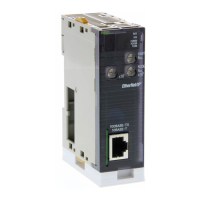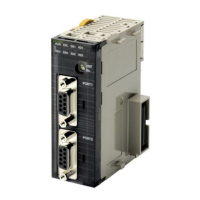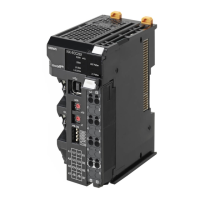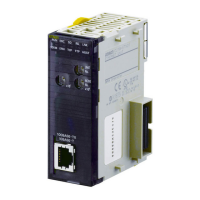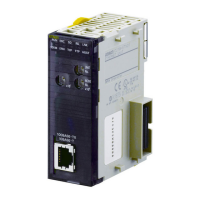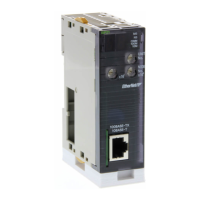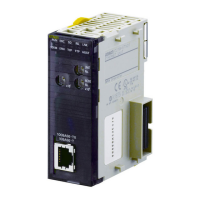149
Overview of the Protocol Macro Functions Section 5-1
Depending on the response received, the user can either choose to resend
the same send message (retry processing), or to perform the next process
(for example, read the process value for a Temperature Controller with a dif-
ferent address).
Note 1. The SEND, RECV, SEND&RECV, WAIT, FLUSH (reception buffer clear),
OPEN (ER-ON), or CLOSE (ER-OFF) commands can be used.
2. Three types of reception matrix are available for switching the processing,
depending on whether the messages are send messages, receive (wait)
messages, or multiple receive (wait) messages. Unlike sequences, these
matrixes are managed as lists.
Sequence Parameters
One protocol
Sequence No. 000 to 999
(60 sequences max./protocol)
Transmission
control parameter
Link word setting
Send/receive
processing
monitoring time
Response
notification method
15 steps max.
Step 0
Step 1
One-step structure
With the SEND, RECV, or
SEND&RECV command
Command (see Note 1)
Next process
• Next step
• To specified step
• Sequence end
• Sequence interrupt
Error processing
Header Address TerminatorData Check
Messages (see note 2)
With the WAIT, FLUSH,
OPEN, or CLOSE command
Message list (see note 2)
Send message list
Receive message list
Reception matrix list (see note 2)
Reception matrix
Case No. 15
Repeated
N (no)
N (error)
Normal end
Command
(see note 1)
Next process
Next process
Case No. 00
Receive message
Header Address TerminatorData Check
15 steps max.
Step 0
Step 1
Y
Parameter Meaning
Transmission control parame-
ters
Control methods, such as flow control
Link words Settings for shared words between the PLC and the
Serial Communications Board.
Monitoring time Monitoring time for send/receive processing
Response notification method Timing for writing received data to I/O memory in the
PLC

